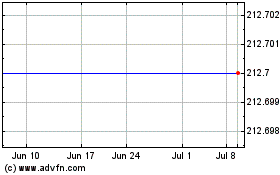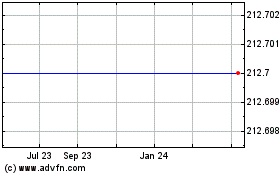The Aetna Foundation has awarded grants totaling $381,000 to
research the effectiveness of several food assistance programs
designed to help low-income families buy more fresh produce and
other healthful foods, and lower their risk of obesity and its
related diseases such as diabetes and heart disease.
Fair Food Network in Ann Arbor, Mich., will receive $250,000 to
evaluate the impact of offering economic incentives at farmers’
markets for beneficiaries of the federal government’s Supplemental
Nutrition Assistance Program (SNAP), formerly known as food stamps.
These farmers’ markets enable SNAP beneficiaries to purchase twice
the amount of produce their government food benefits would normally
afford.
Altarum Institute, also in Ann Arbor, Mich., will receive
$131,000 to study the ability of American Indians living on tribal
lands in Arizona to buy fruits, vegetables and other nutrient-dense
foods that are prescribed by the federal government’s Special
Supplemental Nutrition Program for Women, Infants and Children
(WIC).
“Poor diet is a significant factor in higher rates of obesity
and its correlating chronic health conditions among low-income and
minority populations,” said Gillian Barclay, D.D.S., Dr.P.H., vice
president of the Aetna Foundation.
“It is crucial that we learn if programs and policies designed
to make healthful food more affordable and accessible are working
and how these efforts can be improved. These studies by Fair Food
Network and Altarum Institute will provide important data to help
policy makers and nonprofit agencies refine their efforts in
helping beneficiaries of federal food assistance eat a more
nutritious diet and live healthier lives,” she said.
Fair Food Network is undertaking a cluster evaluation of
healthful food incentive projects for SNAP beneficiaries that the
organization sponsors in Michigan and similar programs sponsored by
Wholesome Wave, which operates in 26 states; marketumbrella.org,
which operates in New Orleans; and Roots of Change, which operates
in California. Collectively, the four organizations support more
than 250 farmers’ markets in urban and rural communities where food
benefit recipients can receive double-value coupons for their
government benefits to purchase locally grown produce.
Fair Food Network will study a diverse sample of 50 sites to
capture the regional, economic, demographic and agricultural
variability of farmers’ markets. The goal is to assess the impact
of these farmers’ markets on SNAP recipients’ food purchasing
behavior and develop best practices for the organizations to
improve project management and results. The study also will measure
the programs’ effect on the economic well-being of participating
farmers, farmers’ markets and local economies. Ultimately, the data
will add valuable information to discussions of the SNAP program,
which is scheduled for reauthorization in the 2012 Farm Bill.
“As changes in SNAP legislation are debated in the months
leading up to passage of the next Farm Bill, it is vital to have an
evaluation of this scope in place as we work to meet the challenges
of curbing obesity and making healthful food available to all,”
said Oran B. Hesterman, Ph.D., president and CEO of Fair Food
Network. “We anticipate that our findings can inform public policy
debates on how SNAP can improve access to healthy food and
encourage recipients to purchase more fresh produce as a critical
step to realizing positive health outcomes for low-income
populations.”
Altarum Institute’s study is aimed at improving the nutritional
intake and health of American Indians who receive WIC benefits and
who are at higher risk of obesity and diet-related chronic
diseases, such as diabetes and hypertension. Preliminary data
suggest that many of the nearly 65,000 WIC participants who live on
tribal lands nationally are unable to benefit fully from the
program because their food outlets have difficulty stocking fruit,
vegetables, whole grains and other healthful foods prescribed by
the WIC program. Cultural barriers may also play a role in limiting
the use of WIC benefits.
To better understand the factors that may impede American
Indians’ ability to purchase healthful foods with their WIC
benefits, Altarum will focus on 12 Tribal WIC programs and one
Urban Indian agency in Arizona. Researchers will analyze WIC
redemption patterns; identify barriers beneficiaries may face, such
as availability and quality of approved food, cultural preferences,
and long distances to WIC-approved food outlets; and identify
barriers tribal grocery outlets may face, including inadequate
wholesale food distribution systems, limited storage, extensive
transportation needs and minimum stocking requirements.
Additionally, researchers will conduct in-depth case studies of
successful WIC redemption programs among the 12 Tribal programs to
pinpoint best practices that can be replicated across Indian Tribal
Organization-managed WIC programs around the nation.
“The federal WIC program has the potential to reverse the
childhood obesity epidemic by promoting healthful eating habits
among young children, particularly in the American Indian
population where nearly 35 percent of children age 2 – 5 are either
overweight or obese,” said Loren Bell, Institute Fellow and
co-director of the Center for Food Assistance and Nutrition at
Altarum. “But WIC’s healthful food guidelines can be effective only
if the people receiving its benefits can purchase healthful food.
By developing data specific to the needs of American Indians living
on tribal lands, we believe our findings will help make
nutrient-dense food more available and accessible. Additionally,
our work can guide federal officials charged with improving the
health of American Indian populations in their review of policies
that support or impede the full use of the WIC program and
determine the technical assistance and resources needed for the
program to be more effective.”
The results of Altarum’s study are expected in fall 2013.
Fighting obesity is one of the Aetna Foundation’s three program
areas, along with promoting racial and ethnic equity in health and
health care and promoting integrated and well-coordinated health
care. In May, the Aetna Foundation announced $500,000 in
funding for research on the impact of federal policies and
programs, such as SNAP, on childhood obesity. Earlier in 2011, the
Aetna Foundation awarded an additional $1 million in funding for
research projects to deepen understanding of the root causes of
obesity, including food pricing, healthful food availability and
the role of sidewalks, green spaces, public safety and other built
environment factors.
About the Aetna Foundation
The Aetna Foundation, Inc. is the independent charitable and
philanthropic arm of Aetna Inc. Since 1980, Aetna and the Aetna
Foundation have contributed $394 million in grants and
sponsorships, including $15.6 million in 2010. As a national
health foundation, we promote wellness, health, and access to
high-quality health care for everyone. This work is enhanced
by the time and commitment of Aetna employees, who have
volunteered more than 2.3 million hours since 2003.
Our current giving is focused on addressing the
rising rate of adult and childhood obesity in the U.S.;
promoting racial and ethnic equity in health and health care;
and advancing integrated health care. For more information, visit
www.AetnaFoundation.org.
About Fair Food Network
Fair Food Network is a national nonprofit dedicated to building
a more just and sustainable food system. We work at the
intersection of food systems, sustainability, and social equity to
provide access to healthy, fresh and sustainably grown food,
especially in underserved communities. We implement model programs
and bring the right people together to generate ideas, share
resources, and promote policy changes to repair our food
system.
About Altarum Institute
Altarum Institute integrates objective research and
client-centered consulting skills to deliver comprehensive,
systems-based solutions that improve health and health care. A
nonprofit serving clients in the public and private sectors,
Altarum employs more than 400 individuals and is headquartered in
Ann Arbor, Michigan with additional offices in the Washington, DC
area; Sacramento, California; Atlanta, Georgia; Portland, Maine;
and San Antonio, Texas.
Aetna (NYSE:AET)
Historical Stock Chart
From Apr 2024 to May 2024

Aetna (NYSE:AET)
Historical Stock Chart
From May 2023 to May 2024
